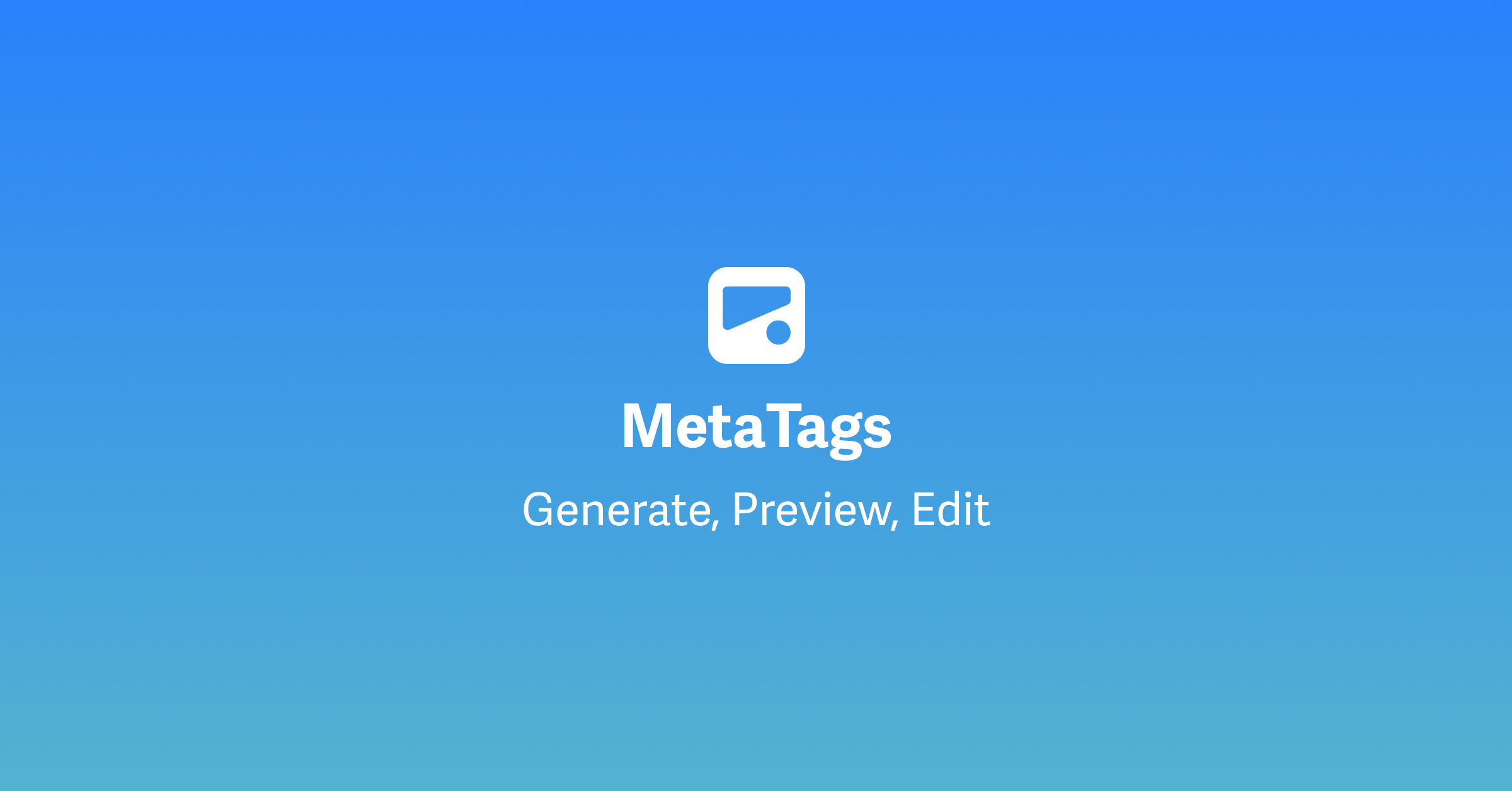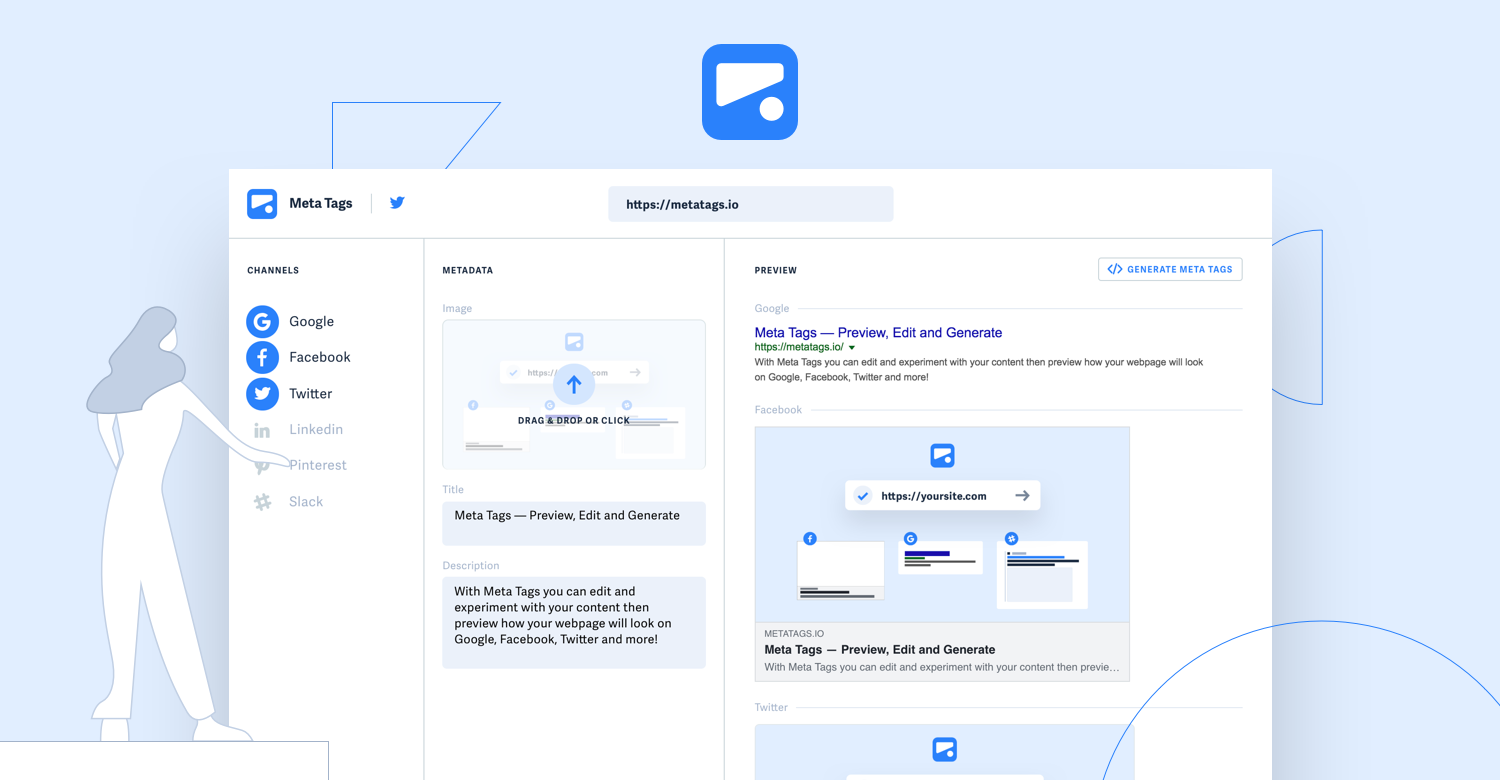Preview
Meta Tags — Preview, Edit and Generate
https://metatags.io/
With Meta Tags you can edit and experiment with your content then preview how your webpage will look on Google, Facebook, X and more!X (Formerly Twitter)
metatags.ioWith Meta Tags you can edit and experiment with your content then preview how your webpage will look on Google, Facebook, X and more!
Meta Tags — Preview, Edit and Generate
Meta Tags — Preview, Edit and Generate
metatags.io
Meta Tags — Preview, Edit and Generate
Slack
Meta Tags — Preview, Edit and Generate
With Meta Tags you can edit and experiment with your content then preview how your webpage will look on Google, Facebook, X and more!
